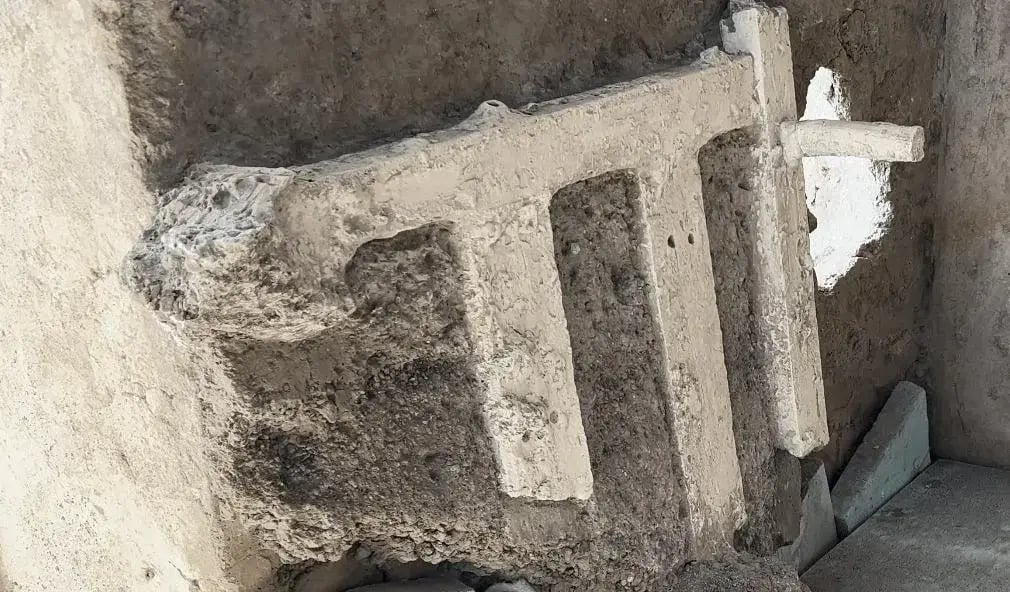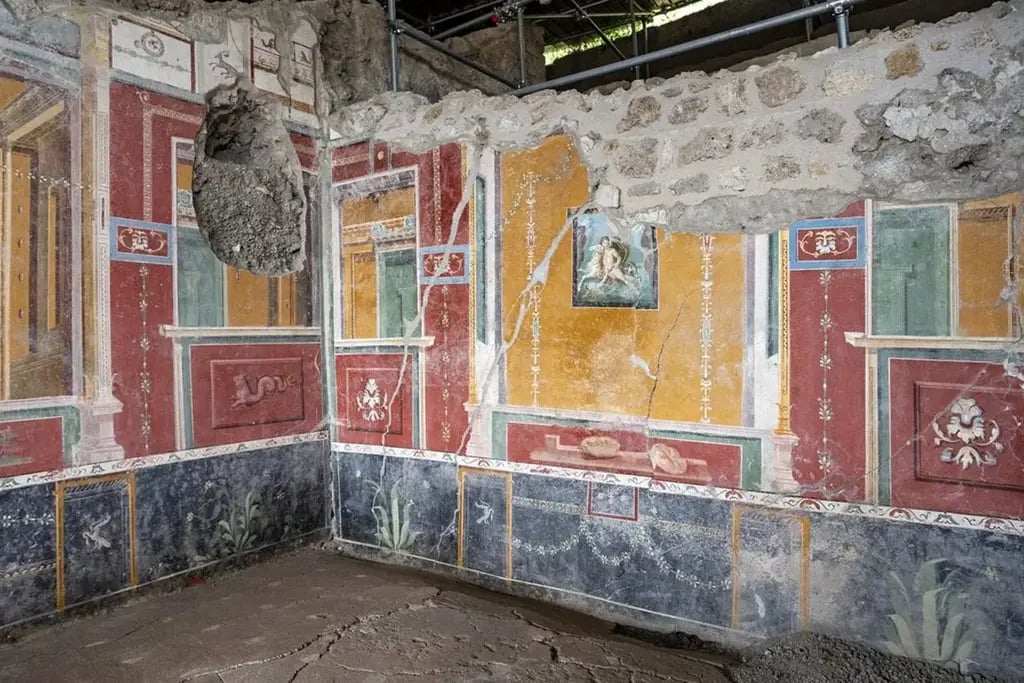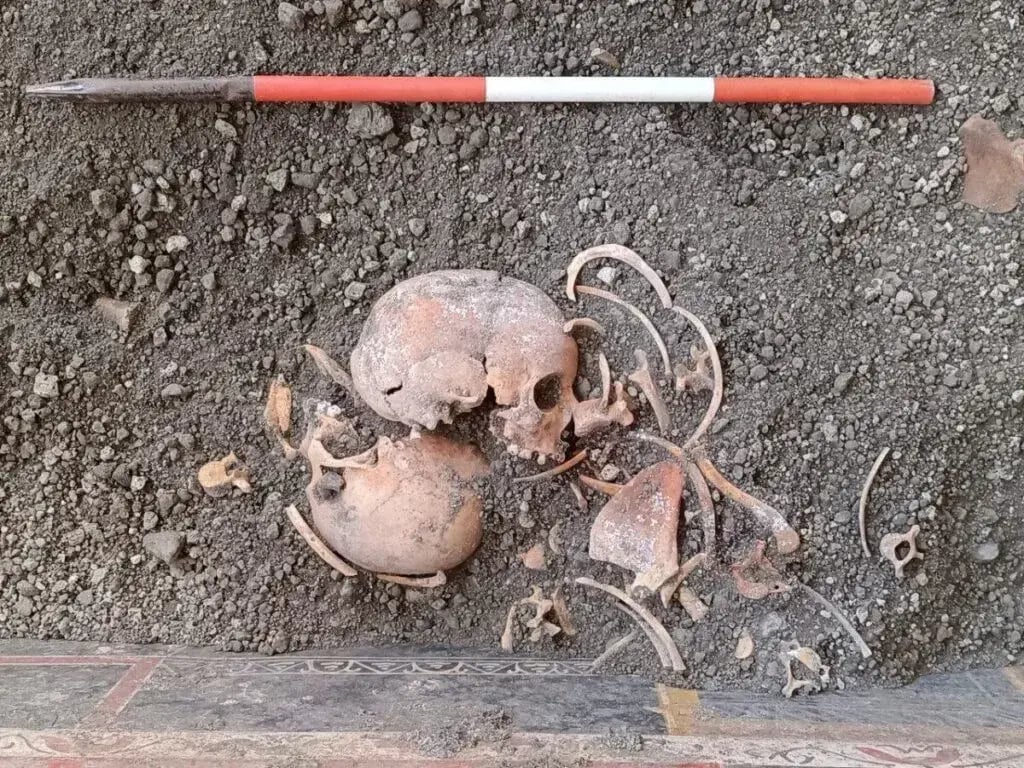Archaeologists have unearthed a chilling glimpse into the final moments of a family caught in the catastrophic eruption of Mount Vesuvius in 79 CE. The tragic scene, discovered within the Casa di Elle e Frisso in Pompeii, paints a vivid picture of desperate attempts to survive as volcanic devastation unfolded. The findings, detailed in a study published in The Journal of the Geological Society and the E-Journal of the Pompeii Excavations, reveal how the family attempted to barricade themselves inside a small room as the deadly eruption unfolded.
The family’s efforts to protect themselves included wedging a bed against the door, presumably to block the entry of volcanic debris as it poured into the house. Gabriel Zuchtriegel, Director of the Pompeii Archaeological Park, explained how the lapilli—a type of volcanic rock—entered the home through a gap in the atrium’s roof, forcing the residents to seek refuge.
"In this small, wonderfully decorated house, we found traces of the residents who tried to save themselves, blocking the entrance to a small room with a bed, of which we made a cast," Zuchtriegel told ANSA. Despite their efforts, the tragedy that unfolded left no escape.
Final moments
During excavation, archaeologists uncovered the remains of at least four individuals, including a child. Their positions suggested panic and fear, as they lived through the harrowing final moments of their lives. Among the remains, a bronze bulla—a protective amulet traditionally given to Roman boys—was found, likely belonging to the child. The team used plaster casting to preserve the imprints left by the victims and their surroundings, including the shape of the bed used for the barricade.
Bird's eye view of the excavations in Pompeii
The extraordinary preservation of the Casa di Elle e Frisso, also known as the House of Elle and Phrixus, has provided archaeologists with invaluable insights. The house includes an atrium with an impluvium (a central water collection basin), a richly decorated triclinium (banquet hall), and a bedroom. The home is named after a fresco in the triclinium depicting the mythological tale of Helle and Phrixus, which was first documented in 2018.
Daily life frozen in time
Beyond the human remains, archaeologists uncovered everyday objects that reveal glimpses of life before the eruption. These included amphorae—containers used for storing garum, a fermented fish sauce popular in Roman cuisine—and a set of bronze tableware. These items underscore the abrupt nature of the disaster, which interrupted daily routines and left the house frozen in time.
3 View gallery


The bed the family used to protect themselves
(Photo: Courtesy of the Archaeological Park of Pompeii)
Get the Ynetnews app on your smartphone: Google Play: https://bit.ly/4eJ37pE | Apple App Store: https://bit.ly/3ZL7iNv
Some evidence suggests that renovations were underway at the Casa di Elle e Frisso when Mount Vesuvius erupted. Researchers noted signs of construction, including removed thresholds, unfinished decorations in certain areas, and cut sections of masonry near the entrance. Despite these ongoing renovations, the family continued to live in the house, ultimately choosing to remain there as the eruption unfolded.
Power of eruption
The eruption buried Pompeii under a suffocating blanket of ash, toxic gases, and debris, preserving the city and its neighboring towns—Herculaneum, Oplontis, and Stabiae—in haunting detail. The Casa di Elle e Frisso was engulfed by multiple pyroclastic flows, which carried searing hot gases and volcanic material. Temperatures in the house reached between 356 and 680 degrees Fahrenheit (180–360 degrees Celsius), eliminating any chances of survival.
“Excavating and visiting Pompeii means confronting the beauty of art but also the precariousness of all our lives,” Zuchtriegel reflected, emphasizing the duality of the site as both a marvel of historical preservation and a sobering reminder of human vulnerability.
The tragedy of the family at the Casa di Elle e Frisso serves as both a window into the personal toll of the ancient disaster and a testament to the ongoing work of archaeologists striving to uncover the stories preserved beneath Pompeii’s ash-covered ruins.





